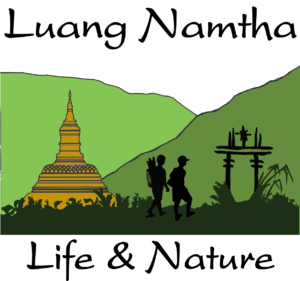Luang Namtha
Tucked in the northwestern corner of Lao PDR, Luang Namtha covers an area of 9,391 square kilometers with more than 85% of its terrain being low calciferous mountains that rise to between 800 – 2,000 meters above sea level. The highest point (2,094 masl) is found in Vieng Phoukha District and several peaks that approach 2,000 meters can be found among the province’s central mountains that separate Namtha and Muang Sing. Like the rest of the country, Luang Namtha’s weather pattern is characterized by a rainy season lasting from May to October followed by a cool dry period from November to February. March and April are the hottest months. On average, daily temperature is a pleasant 25 degrees Celsius but during the cool season it can dip to zero on the coldest nights.
To the north, Luang Namtha shares a 140 kilometer land border with the People’s Republic of China and its northwest frontier with Myanmar follows a 130 kilometer stretch of the Mekong River. Administratively, Luang Namtha Province is divided into 5 districts including Namtha, Nale, Vieng Phoukha, Long and Sing (Muang Sing) that are further divided into 364 village units. The provincial capital, which is also called Luang Namtha, is in Namtha District and is the most heavily populated town with nearly 45,000 inhabitants. Total population in 2014 was 185.436, the women population was 83.893, consist of 17 ethnic groups and more than 30 clans with 85% classified as uplands area and 15% as planes area.
Luang Namtha’s main industries are agriculture, wood processing, lignite and copper mining, handicraft production, transportation and tourism. In 2014 per-capital GDP stood at US$ 1.454 and grew at an annualized rate of 8.70%. In terms of employment, most people are engaged in agriculture, planting rice, corn, vegetables, cassava and peanuts. Other important agricultural products are buffaloes, cattle, fish, chickens, rubber tree, teak-wood, watermelons, sugarcane and peppers. Forest products such as bamboo shoots, mushrooms, rattan, cardamom and ginger are also key sources of income for the rural population.


Leave a Reply
Want to join the discussion?Feel free to contribute!